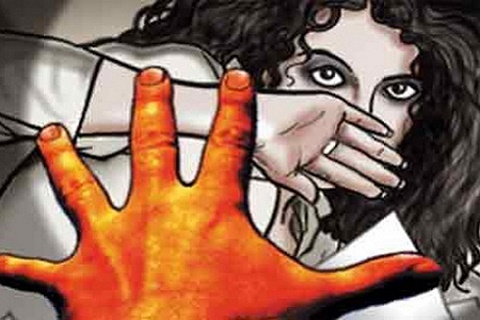This article is written by Subiya Masood, from the Faculty of Law, University of Delhi.
Table of Contents
Introduction
In its glorious legal history, India has been a witness to several landmark judgments and these judgments give birth to legalisation which wasn’t there before. For example,
- KM Nanavati’s Case- abolished the jury system.
- Vishaka vs State of Rajasthan- gave birth to sexual harassment of women at workplace 2013.
And a lot more cases. Mathura rape case and Nirbahya rape case were certainly one of such unique cases.
Mathura rape case
One of the most national-level issues that brought women’s groups together was the Tuka Ram And another vs the state of Maharashtra, more commonly known as the Mathura Rape Case. This case gave birth to legalizations which weren’t there before. The bench that gave the judgment of this case was constituted by justice P.S. Kailasam, A.D. Koshal, and Jaswant Singh. The decision of the bench was highly criticized and condemned and thus led to huge public outcry and protest against the laws of the country and the day was regarded as the black day in the history of empowerment of women.
Facts of the case
The girl who is said to have been raped is Mathura. Her parents died when she was a child and she lived with her brother Gama. To earn a living both of them worked as labourers. Mathura used to go to Nunshi’s house for work and during her work, she came into contact with Ashok, who was the sister’s son of Nunshi. She developed a sexual relationship with Ashok and thereafter they decided to get married. On 26th March 1972, a complaint was filed by Mathura’s brother Gama alleging that Mathura had been kidnapped by Nunshi, her husband Laxman, and Ashok. The three along with Mathura were brought to the police station and the statements were recorded.
After recording the statement Mathura along with Nunshi and Gamma started leaving the police station however, the first appellant Ganpat directed Nunshi and Gamma to move out and asked Mathura to wait at the police station. Immediately thereafter, Ganpat took Mathura into the loo and raped her despite protest and stiff resistance on her part. After satisfying his lust he departed and the other appellant Tukaram fondled Mathura’s private part after coming to the place where she was. He also wanted to rape her but failed to do so as he was highly intoxicated.
There was natural anxiety outside the police station because the lights were shelved and doors were locked. To disperse the crowd, Tukaram emerged and declared that Mathura had already left but to his surprise, Mathura managed to get to the door and screamed that she had been raped by Ganpat.
Mathura was examined by the doctors. She had no injuries. Her hymen revealed old ruptures. Other aspects of physical examination disclosed that she had intercourse in the past. The presence of ejaculate was detected on her bush, on her garments, and also the pajama of Ganpat.
Session Court
To everyone’s surprise, the session judge found the evidence insufficient to convict the accused. The farthest he would go was to hold that Mathura had sexual intercourse with Ganpat! The district judge, therefore, acquitted the appellant.
High Court
The Decision of the session court was reversed by the Mumbai high court and sentenced Tukaram and Ganpat to rigorous imprisonment for one year and for five years respectively. Its grounds for reversal were that since both these gentlemen were strangers to Mathura, it was highly unlikely that Mathura would invite the accused to satisfy her sexual desires. The high court was of the view that policemen took the advantage of the fact that Mathura was involved in a complaint filed by her brother, and she was alone in the dead hour of the night in the police station. This well-tried that she couldn’t have in any likelihood, consented to intercourse.
Special Leave
The appellant in an appeal by special leave contended that:
- It cannot be deduced that the girl had been subjected to any fear or was under any compulsion as there was no direct evidence about the nature of the consent of the girl.
- The alleged intercourse was peaceful and there was no resistance at all.
- The claim of the girl that she shouted is also false.
Allowing the appeal, The court held:
That under section 375 of the Indian penal code only the “fear of hurt or death” can vitiate sexual intercourse. There was no such finding recorded. Whereas Tukaram is concerned, Mathura pointed more serious things to him in her deposition and later attributed these acts to Ganpat.
The appellants were acquitted stating that this alleged intercourse was a “peaceful affair”.
Aftermath
The decision of the supreme court led to huge public outcry and protest against the laws and the decision delivered by the court.
- To have the case reheard an open letter was written to the chief justice of India by law professors of Delhi University. The concept of judgment was protested by the professors.
- As a direct response to the judgment, a number of women’s groups were formed including saheli in Delhi. The first-ever feminist group in India against rape ‘forum against rape’later, renamed as ‘forum against the oppression of women’ called for a national conference which started the debate for legal reforms.
- Women from various States including Delhi, Mumbai, Hyderabad, and Nagpur took to the streets on the international women’s day.
However, The result of the public outcry was the criminal law amendment act being passed in 1983.
Legal reforms: The criminal law (second amendment) Act,1983
- On 25th December 1983, a statutory provision in face of section 114(A) of the evidence act was made, which states that if the victim says that she did not consent to the sexual intercourse the court shall presume the same.
- With the enactment and addition of 376(A),376(B),376(C),376(D) in IPC section 376 (punishment of rape under Indian penal code) went under a change, which made the custodial rape punishable. ( which was further amended in 2013, after the Nirbhaya case).
- Further, the burden of proof was shifted from the victim to the offender, and it also added provisions for in-camera trials, the prohibition on the victim identity and tougher sentences.
This case led to greater awareness of women’s legal rights issues, oppression, and patriarchal mindset and therefore proved to be a turning point in the women’s rights movement in India.
Nirbhaya rape case
A physiotherapist who came to be known as Nirbhaya was gang-raped inside the running bus in south Delhi by six persons who severely assaulted Nirbhaya before throwing her out on the road and she succumbed to injuries on 29th of December at Mount Elizabeth hospital in Singapore.
The fearless ‘NIRBHAYA’
Section 228A(2) IPC puts an absolute bar on the media to reveal the identity of the victim. For this reason, various publications gave her different names out of which ‘NIRBHAYA’ which means ‘FEARLESS’ was widely used.
Facts and judgment of the case
On their way back from the movie theatre on the night of December 16,2012, they boarded an off-duty charter bus at the munirka bus stand where there were other five men passengers on the bus. After a while, the bus driver took the bus in the wrong direction, and the men pretending to be passengers shut the door of the vehicle. On objecting to the move Nirbhaya’s friend Pandya was shut down by the other five men and they started molesting nirbhaya. Pandya tried to protect Nirbhaya but he was beaten by the accused with the rod and thereafter they dragged Nirbhaya to the back of the bus and raped her for over an hour. As she tried to get off the clutches of the attackers, one of the juvenile attackers inserted the rod into her private parts damaging her intestines, and while they raped and tortured her the bus driver drove all over Delhi.
After the attack Nirbhaya along with her friend was thrown out of the bus to die at the side of the road. The passerby who informed the Delhi police found both of them half-dead. She and her friend were rushed to the hospital where the doctors found that her intestines were pulled and ripped out and only 5 percent of intestines left inside her body and after all the efforts of the doctors to save her life, she succumbed to her injuries on December 29, 2012. She before dying stated to the police saying she wanted justice against the six attackers.
All the accused were arrested and charged with murder and sexual assault. On March 11, 2013, one the accused died in police custody from possible suicide in Tihar jail. The juvenile was sent to the reformatory centre and was convicted for three years of imprisonment in the reform facility. The 4 other remaining adult defendant was sentenced to death as they were found guilty of rape and murder. In 2014, the convicts approached the supreme court which stayed their execution. On May 5, 2017, by upholding the death penalty of the four convicts the Supreme court stated “This case is rarest of a rare case and we are compelled to give extreme punishment to ensure justice”
Aftermath
The incident led to widespread protest and demonstration across the country. As a result two committees were formed: the justice Verma committee and Usha Mehra committee. The report submitted by the committee’s proposed legal reforms as a result of various substantial and procedural changes in the law were brought.
- Section 375 of IPC scope was widened now it included all forms of oral, virginal, and anal sex which violates the dignity of the women.
- Punishment for Gang rape was included that punishes the offender for 20 years which may extend to a lifetime.
- Section 376A enabled rigorous punishment of imprisonment of not less than 20 years, or imprisonment for life or death if the rape leads to the death of the women or if the women are left in a vegetative condition.
- 376E allowed punishment to repeated offenders if they are subsequently convicted for the offences under 376A and 376D in which the offenders will be punished with imprisonment for life or even death.
- section 376(1) and 376(2) of IPC were deleted that allowed courts to reduce the sentence.
- Section 166A was introduced in IPC that punishes such public servants who fail to record such information.
- Furthermore, section 166B of IPC made it mandatory for the hospitals to treat the rape victim.
- The criminal amendment also made voyeurism, disrobing women, stalking, and voluntarily throwing acid punishable under various sections.
A critical comparison of the two legislation
The laws now have changed drastically to what existed previously. With the birth of new values and technologies the societal views change from time to time similarly the laws also change from time to time. The major rape cases such as Mathura rape case, the Nirbhaya case, the Aruna shaubug case, the Priya Patel rape case etc all these cases have brought a change in the existing rape laws by reformation and interpretation.
As there was a rise in threat towards individual privacy in the country the criminal law amendment ordinance was replaced by the criminal amendment act (2013). which mandated to make changes in the IPC and Crpc over time certain crimes were included in the IPC. voyeurism is one such crime that was included in the IPC. A ‘voyeur’ is defined as a “person who derives sexual satisfaction from the covert observation of others as they undress or engage in sexual activities.
The provisions of section 114A of the Indian evidence act was another important amendment. This step was taken to protect the character of women. Thus section 53A was introduced in the Indian evidence act making it clear that in the cases of sexual assault and rape the court will not take in account the evidence related to the victim’s previous sexual experience or her character. Even after such strict laws, the character assassination of the women continues in society.
Lastly and very importantly, the amendment under Section 354 in The Indian Penal Code, in addition to The Sexual Harassment at workplace act 2013, enhanced the definition of rape.
Conclusion
The development in the rape laws has come a long way but there are still certain issues that need to be addressed such as gender neutrality according to IPC a man cannot be the victim of rape and the concept of marital rape. The laws are dynamic they change with time but with the rape laws, the major concern is that the law is amended only when someone among us suffers, therefore, it is a must that the rape laws work in all its dynamism and necessary changes are done accordingly.
References
https://indiankanoon.org/doc/68696327/
https://indiankanoon.org/doc/1092711/
http://edition.cnn.com/interactive/2013/11/world/india-rape/
LawSikho has created a telegram group for exchanging legal knowledge, referrals and various opportunities. You can click on this link and join:













